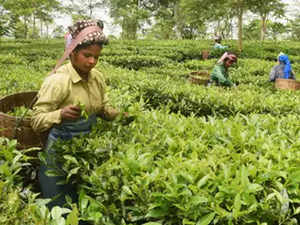 Agencies
AgenciesDomestic tea prices had witnessed a considerable uptick in FY2021 due to a significant supply-demand mismatch.
As per the notification issued by the Assam government on February 23, the state government had notified an interim enhancement of wages for tea plantation workers by Rs. 50 per day with effect from February 22, 2021, till finalisation of the revised minimum wages proposed earlier. However, the wage rate hike was stayed by the Gauhati High Court on March 16, 2021, while hearing a petition filed by the Indian Tea Association and several other bulk tea companies. The court also allowed the tea companies to set the enhancement until the final hearing is concluded. Based on these instructions, the Indian Tea Association, by end-March 2021, decided to increase the daily wages in Assam by Rs 26 per day, which is in line with the wage rate increase announced in West Bengal in January 2021.
Commenting on the same, Mr. Kaushik Das, vice president and sector head, corporate sector ratings, ICRA, said: “While the matter is sub judice, the increase in wage rates, as notified by the GoA, would increase the cost of production by Rs 25 per kg for Assam gardens, as per ICRA’s estimates. Such a large increase has the potential to reverse the material improvement in financial performance that the industry had witnessed in FY2021. While the current price trends are firm, any significant reversal in prices may lead to a deterioration in the financial health of the NI- based bulk tea companies”
Domestic tea prices had witnessed a considerable uptick in FY2021 due to a significant supply-demand mismatch. While the domestic production declined by almost 135 million kg, the consumption continued to remain firm, thus supporting bulk tea prices. Although, the increase in prices was witnessed in both the crush-tear-curl (CTC) and the orthodox varieties of tea, the improvement had been the sharpest for the CTC variety from Assam, average prices of which were up by Rs 70 per kg in FY2021, while that of orthodox teas were up by Rs 50 per kg.
For South Indian teas, the average CTC prices increased by Rs 44 per kg and orthodox teas by Rs 23 per kg during the last fiscal. Prices in recent auctions, in the new fiscal, has also remained firm owing to lower pipeline stocks. While it would be too early to comment on the exact level of tea prices in FY2022, the overall shortages in CY2020 are expected to remain at least till around the peak production months of August / September 2021, thus supporting the prices. For the full year, however, prices are likely to witness moderation, once the production returns to normal in the new season.
On the global front, the aggregate tea production witnessed a decline of 2.2% during CY2020, primarily because of significant contraction in India (~10%) and Sri Lanka (~8%). Production in Kenya, however, witnessed a significant increase of 24% in CY2020. Given the huge increase in supplies, entirely of the CTC variety, Kenyan auction prices continued to be negatively impacted, correcting by almost 9% during the year. The Sri Lanka auction prices, however, witnessed an improvement by 16%, driven by supply shortages.
On the export front, Indian export volumes were down by 18% in CY2020, with a higher decline witnessed in NI export (~19%). The same was primarily led by lower export of orthodox teas, owing to a significant drop in Assam orthodox production (decline of 38%) in the last calendar year. In the current season, the ability to increase export volumes at remunerative prices would be a key factor in determining the overall supply-demand balance in the domestic tea industry.
In FY2021, while the debt coverage indicators of bulk tea players from Assam are estimated to have improved with interest coverage and total debt/OPBDITA of around 3.2-3.5 times and 3.2 times respectively of companies in ICRA’s sample set, at an absolute level it would continue to remain moderate. In FY2022, however, the increase in operating cost and some moderation in tea prices, as production returns to normal levels, would lead to pressure on debt coverage indicators. “With base case expectations of a 10-12% decline in average realisations and a substantial jump in the cost of production, if the GoA recommendation is eventually adopted, the interest cover and Total Debt/OPBDITA for the NI bulk tea industry is estimated to moderate to ~2.5-3.0 times and ~ 3.50-4.25 times respectively,” Mr. Das reiterated.
(Catch all the Business News, Breaking News, Budget 2024 Events and Latest News Updates on The Economic Times.)
Subscribe to The Economic Times Prime and read the ET ePaper online.
(Catch all the Business News, Breaking News, Budget 2024 Events and Latest News Updates on The Economic Times.)
Subscribe to The Economic Times Prime and read the ET ePaper online.









 Get Unlimited Access to The Economic Times
Get Unlimited Access to The Economic Times
